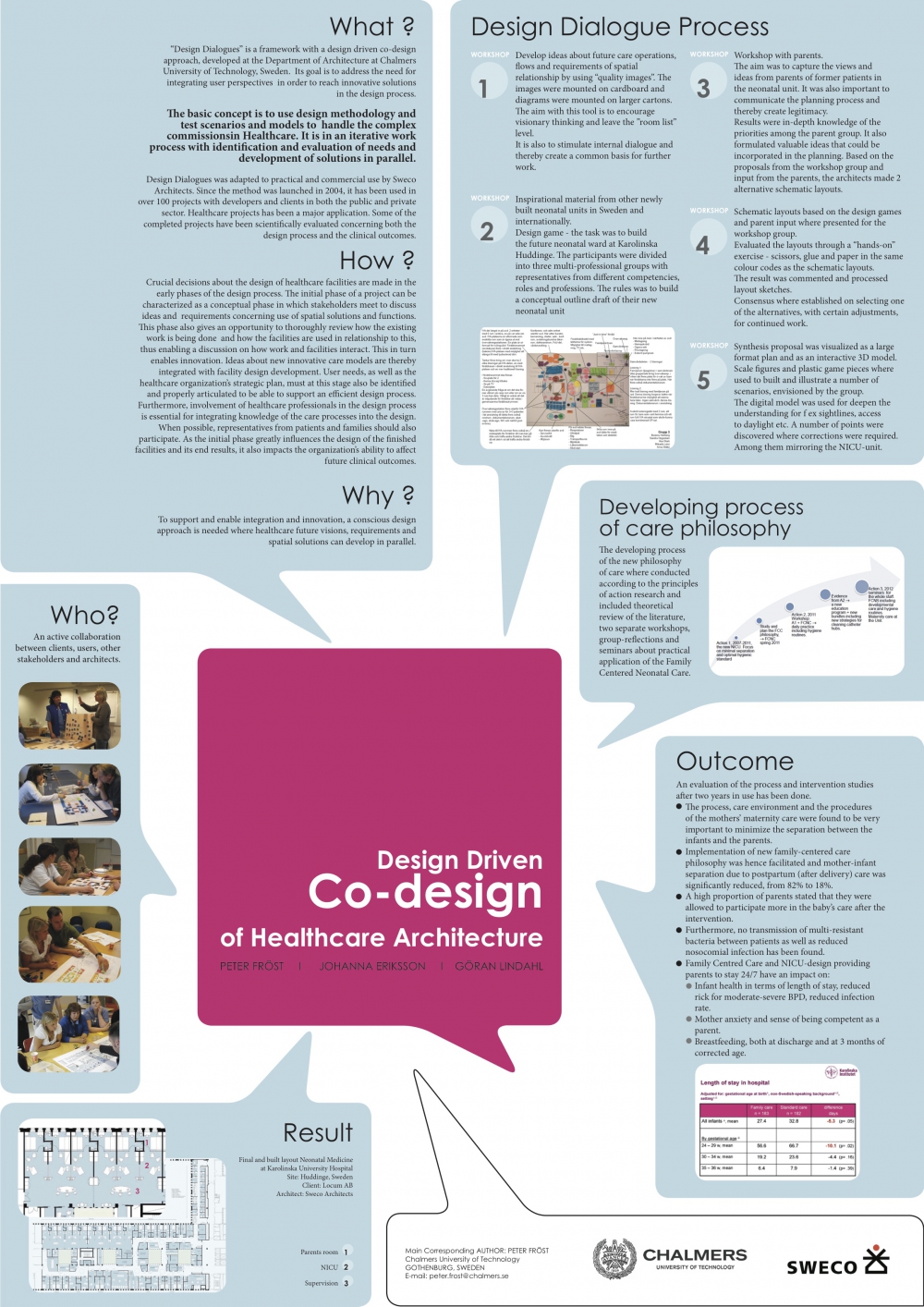Healthcare / Facilities design
European Healthcare Design 2016
Design-driven co-design of healthcare architecture
By Peter Fröst | 03 Aug 2016 | 0
Crucial decisions about the design of new healthcare facilities are made in the early phases of the design process. The initial phase can be characterised as a conceptual phase in which stakeholders meet to discuss ideas and requirements concerning spatial solutions and functions. This phase also gives an opportunity to review how existing work is done and how the facilities are used accordingly, enabling a discussion on how work and facilities interact.
Abstract
Ideas about new care models are integrated with facility design development. User needs, as well as the healthcare organisation’s strategic plan, must be identified and articulated to support an efficient design process. Involving healthcare professionals in the design process is essential for integrating knowledge of care processes into the design. Where possible, representatives from patients and families should also participate. The initial phase impacts the healthcare organisation’s ability to affect future clinical outcomes.
A design approach is needed where healthcare future visions, needs and spatial solutions can develop in parallel. Using a co-design approach, ‘Design dialogues’ is a framework that addresses the need for integrating user perspectives to reach innovative solutions in the design process. The framework builds on interactive and participatory dialogue processes involving multi-disciplinary teams. It comprises workshops and tools, and includes active collaboration between clients, users, architects and other stakeholders.
The basic concept is to use design methodology and model-making to handle complex commissions in an iterative work process, with identification and evaluation of needs and development of solutions. While working together in a cross-disciplinary group, participants use design artefacts to explore spatial relationships and new design concepts simultaneously.
Sweco Architects adapted the Design dialogues method for practical and commercial use in 2004. Since then it has been used in more than 100 projects in both the public and private sectors.
Some completed projects have been scientifically evaluated according to both design process and clinical outcomes. Based on a neonatal department at Karolinska University Hospital in Stockholm, the paper will focus on the Design dialogues process, and why and how it was performed. It will also present positive results concerning clinical outcomes and discuss how the design process influenced the development of a new care philosophy and the final architectural design.
Organisations involved


